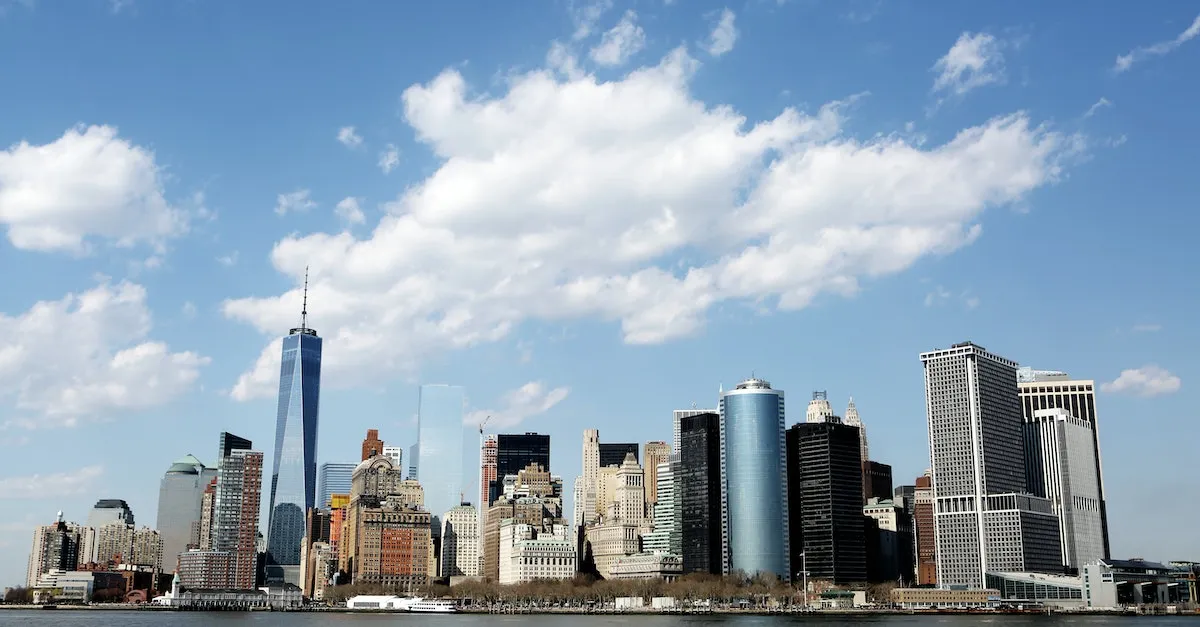Is New York Up North?
With its sprawling cities, bustling ports, and immigrant history, New York seems quintessentially Northeastern. But is the Empire State really ‘up north’? While subjective, the question provokes debate among Americans across different regions. In this comprehensive guide, we’ll explore New York’s geography, climate, culture, and history to better understand its identity as a northern state.
If you’re short on time, here’s a quick answer: While subjective, most Americans would consider New York a northern state based on its geography above the Mason-Dixon line and cool climate relative to southern states.
New York’s Geographic Location
When it comes to the geographical location of New York, there are a few factors to consider. First and foremost, New York is located in the northeastern part of the United States. While some may debate whether it is truly considered “up north,” there are a few key elements that support this claim.
Above the Mason-Dixon line
One way to determine if New York is “up north” is by examining its position in relation to the Mason-Dixon line. The Mason-Dixon line was originally surveyed in the 1760s to settle a border dispute between the colonies of Pennsylvania and Maryland.
It is often used as a cultural and geographical marker, separating the northern and southern regions of the United States. New York, being located above this line, can be considered part of the northern region.
North of the 40th parallel
Another way to assess New York’s location is by looking at its position in relation to the 40th parallel north. The 40th parallel is an imaginary line that circles the globe and serves as a reference point for latitude.
New York City, for example, is situated at approximately 40.7 degrees north latitude, placing it north of this significant parallel. This further supports the argument that New York is indeed “up north.”
Cool continental climate
New York’s climate is another factor that aligns with its northern location. The state experiences a cool continental climate, characterized by cold winters and mild summers. The northern regions of the state, including the Adirondack Mountains, often see heavy snowfall and freezing temperatures during the winter months.
This climate is typical of more northern areas and further reinforces the idea that New York is “up north.”
Northern Cultural Identity
The Northern region of the United States, including states such as New York, has a unique cultural identity that distinguishes it from other regions. This identity is shaped by various factors, including immigration, industry, and the absence of plantation agriculture.
Let’s take a closer look at these elements that contribute to the northern cultural identity.
Immigration through Ellis Island
One of the key factors that shaped the cultural identity of the North is the massive influx of immigrants through Ellis Island in New York. During the late 19th and early 20th centuries, millions of people from Europe arrived in the United States, with many settling in the northern states.
This wave of immigration brought diverse cultures, languages, and traditions to the region, enriching its cultural fabric. The impact of this immigration can still be seen today in the vibrant neighborhoods and cultural events that celebrate the heritage of different immigrant communities.
Industry and Commerce
The North has long been known for its industrial and commercial prowess. Cities like New York, Boston, and Chicago have been centers of innovation and economic activity. The presence of major industries, such as manufacturing, finance, and technology, has played a significant role in shaping the cultural identity of the North.
The fast-paced, dynamic nature of these industries has influenced the mindset and lifestyle of the people living in the region. The Northern culture is often associated with a strong work ethic, entrepreneurial spirit, and a drive for success.
Lack of Plantation Agriculture
Unlike the Southern states, the North did not have a strong tradition of plantation agriculture. Instead, the region developed a different economic model based on industry, trade, and commerce. This absence of large-scale agriculture shaped the cultural identity of the North, as the focus shifted towards urbanization and the development of a diverse economy.
The North became known for its intellectual and cultural institutions, such as universities, museums, and theaters, which further contributed to its unique identity.
Distinct from the Deep South
New York, often associated with the bustling streets of Manhattan and the iconic Statue of Liberty, may not immediately come to mind when thinking about the Deep South. However, the state of New York has distinct characteristics that set it apart from the southern region of the United States.
Different agriculture
One of the key differences between New York and the Deep South lies in their agricultural practices. While the Deep South is known for its vast plantations and cash crops such as cotton and tobacco, New York has a more diverse agricultural landscape.
The state is known for its apple orchards, dairy farms, and vineyards. In fact, New York is one of the leading producers of apples in the country, with the Finger Lakes region being particularly famous for its wineries.
Abolished slavery early
New York played a significant role in the abolitionist movement and was one of the first states to abolish slavery. In 1799, the state passed a gradual emancipation law that freed children born to enslaved parents after a certain age.
This law paved the way for the complete abolition of slavery in the state in 1827. This progressive stance on slavery set New York apart from the Deep South, where slavery persisted for several more decades.
Yankees vs. Dixie
The cultural differences between New York and the Deep South are evident in their respective identities. New Yorkers are often referred to as “Yankees,” a term that originated during the American Civil War to describe those from the northern states.
The Deep South, on the other hand, is often associated with the term “Dixie,” which represents the southern states and their distinct culture. These regional identities reflect the historical and cultural divide between New York and the Deep South.
While New York may not be geographically located in the Deep South, it is important to recognize the unique characteristics that distinguish it from the southern region of the United States. From its diverse agriculture to its progressive stance on slavery, New York’s history and culture set it apart from the Deep South in many ways.
Comparisons to New England
More urban and diverse
When comparing New York to New England, one noticeable difference is the urban landscape and diversity. While New England is known for its small towns and picturesque landscapes, New York stands out as a bustling metropolis with its iconic skyline and diverse population.
The city of New York itself is a vibrant melting pot, attracting people from all over the world. According to the U.S. Census Bureau, New York City is the most populous city in the United States, with a population of over 8 million people.
The city’s diversity is reflected in its neighborhoods, each with its own unique character and cultural influences. From the vibrant streets of Manhattan to the vibrant neighborhoods of Brooklyn and Queens, New York offers a rich tapestry of cultures and experiences.
Less stereotypically ‘Northern’
While New England is often associated with the stereotypical image of quaint New England towns, covered bridges, and fall foliage, New York breaks away from this traditional perception. Geographically, New York is located in the northeastern part of the United States, but it is not always considered as part of the “North” in the same way as New England.
The state has a unique identity that sets it apart from its New England neighbors. New York City, in particular, is often seen as a world of its own, with its own distinct culture and energy. From the vibrant street life to the iconic landmarks, New York has a character all its own that defies easy categorization.
Regional rivalry
Another aspect to consider when comparing New York to New England is the regional rivalry that exists between them. This rivalry can be seen in various aspects, from sports competitions to cultural differences.
When it comes to sports, the rivalry between New York teams, such as the Yankees and the Mets, and New England teams, like the Red Sox and the Patriots, is well-known and fiercely contested. Beyond sports, there can be a sense of competition and pride between the two regions, each with its own distinct history, traditions, and sense of identity.
Conclusion
While the idea of New York being a ‘northern’ state is subjective, its geography, climate, history, and cultural identity align more closely with the North than the South. When viewed in relation to New England and the Deep South, New York falls somewhere in the middle – making it a transitional northern state with its own distinct regional flavor.








